June 5, 2024
Celebrating 79 years of The Spartan statue
From Beaumont Tower to Spartan Stadium, Michigan State University’s campus is filled with iconic locations — and The Spartan statue is no exception. Dedicated June 9, 1945, the nearly 10-foot sculpture has stood tall for 79 years. A meeting place and landmark for decades, The Spartan statue will be a special place on this campus home for years to come.
All images belong to MSU Archives and Historical Collections unless otherwise noted. Banner image by Nick Schrader.
This story has been updated and was originally published in June 2023.
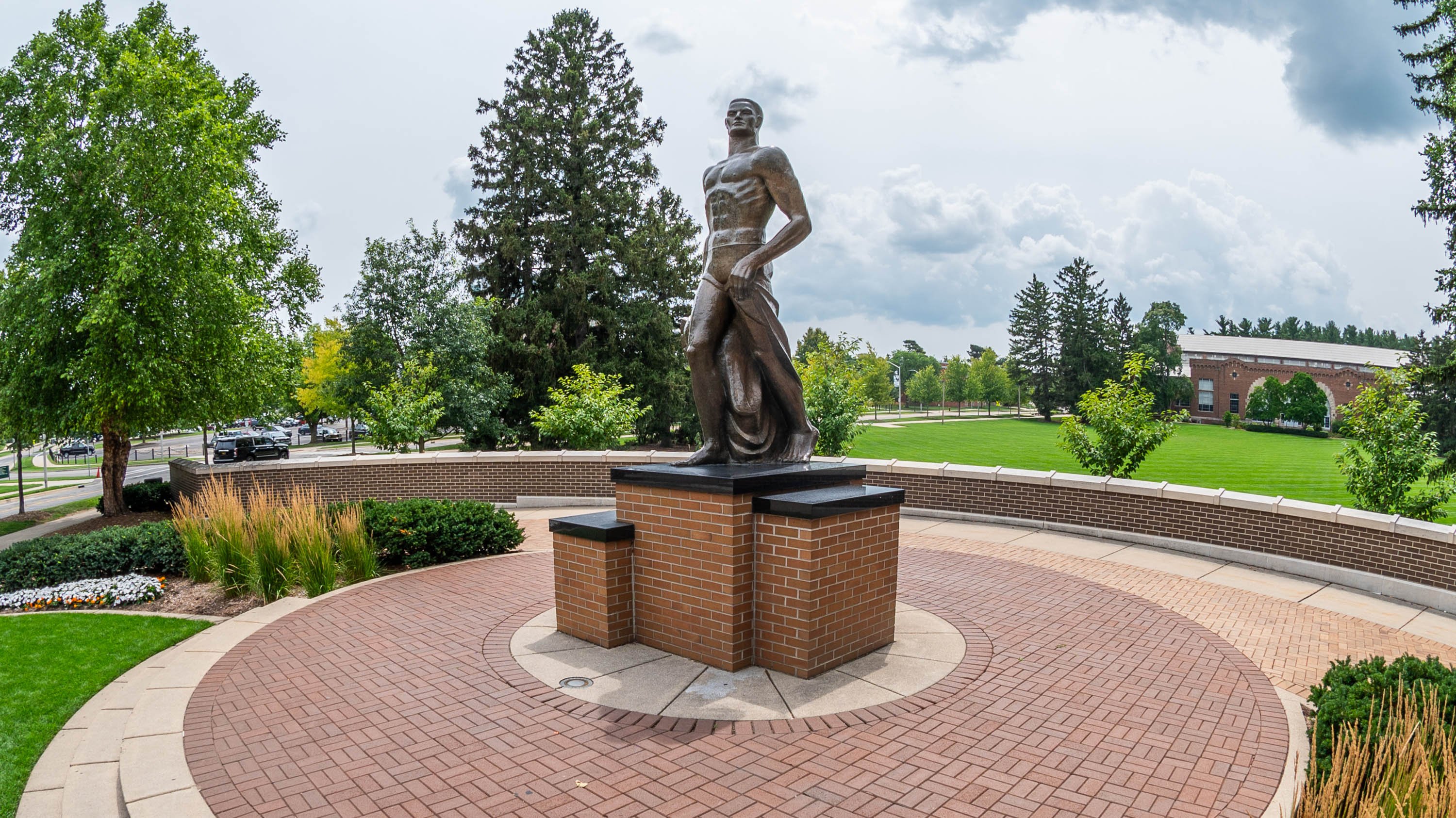
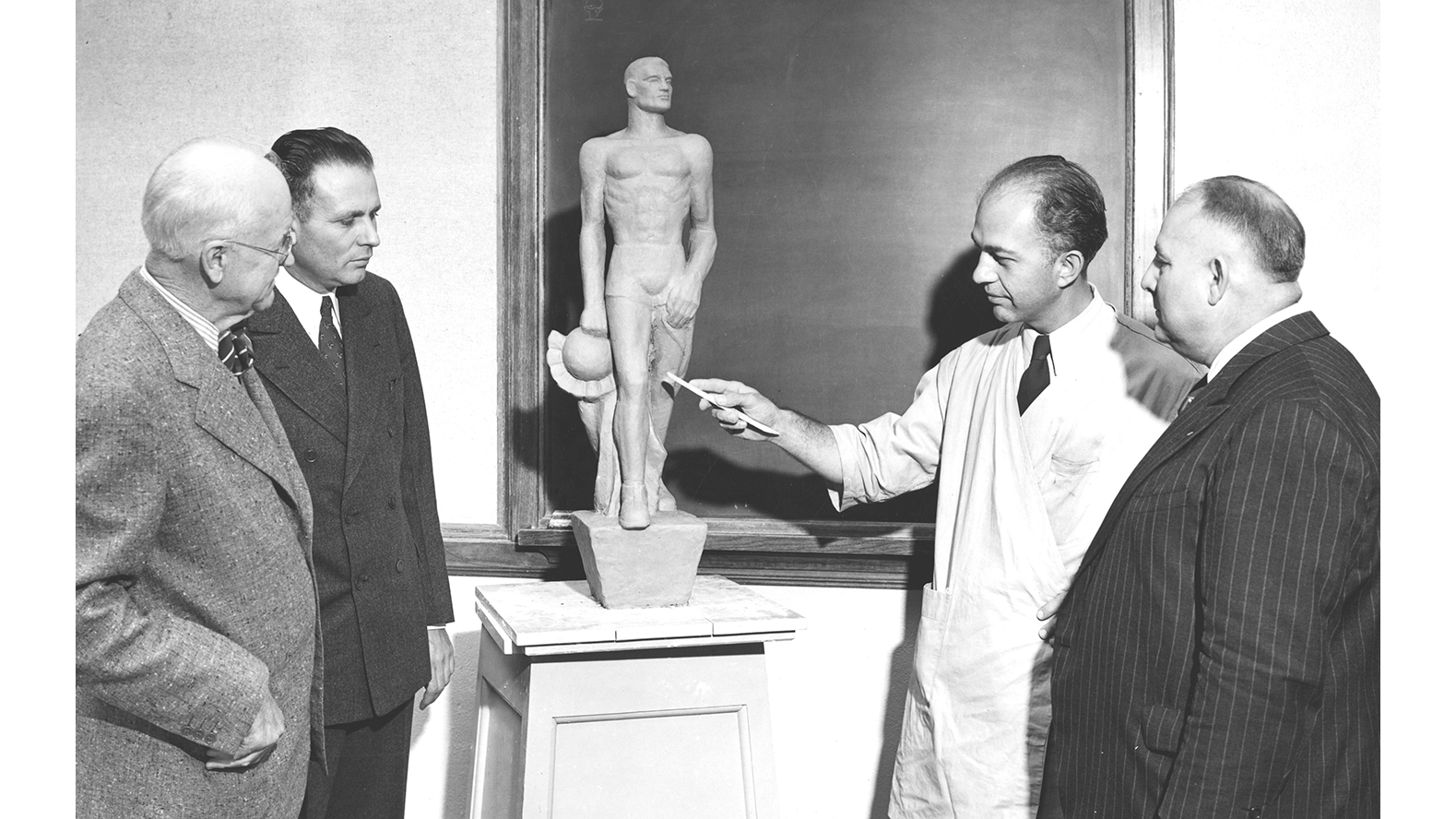
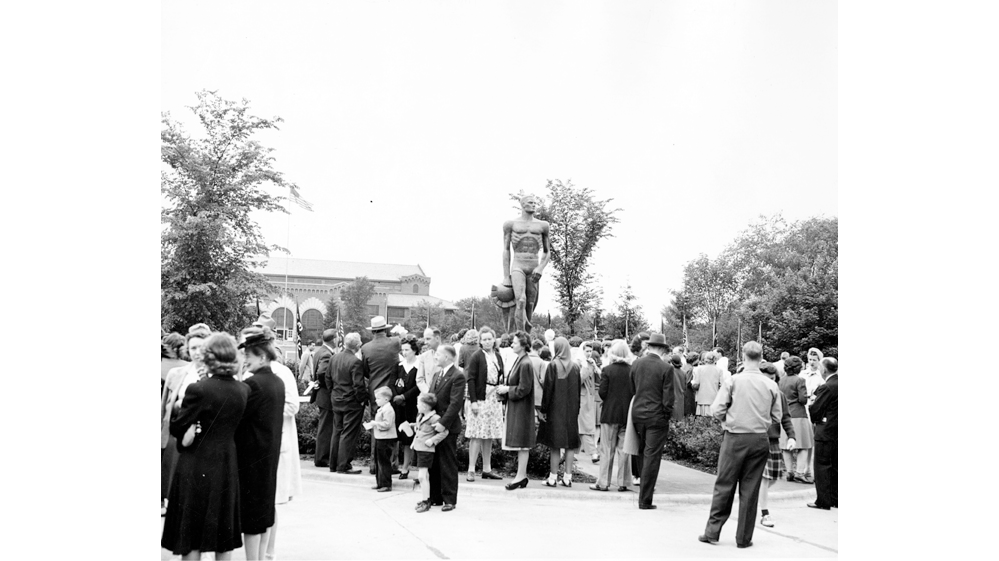
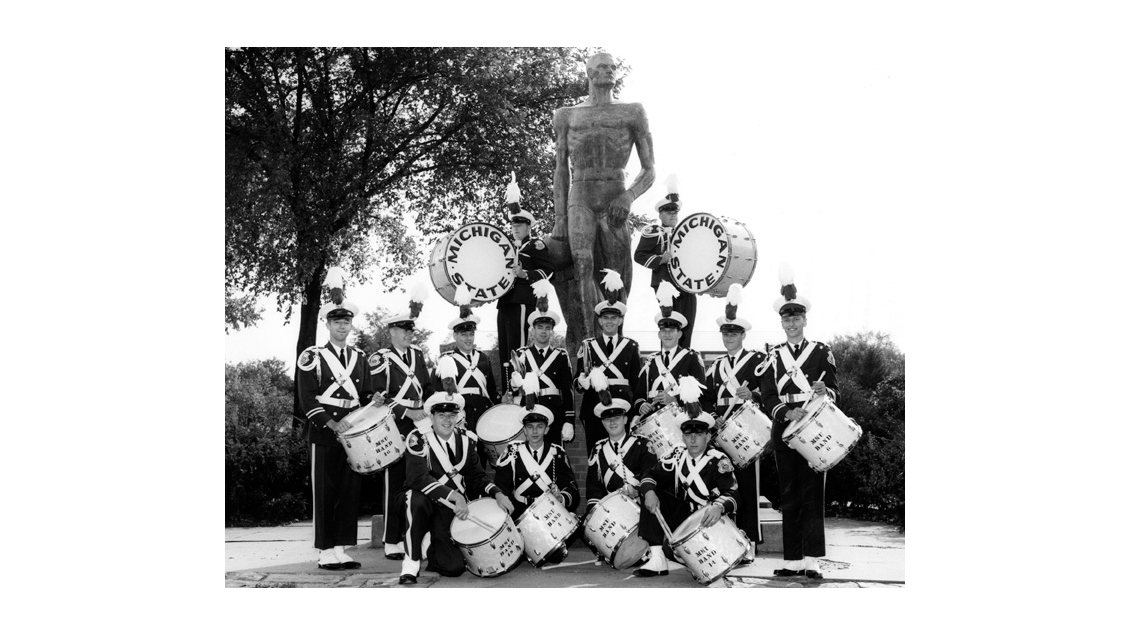
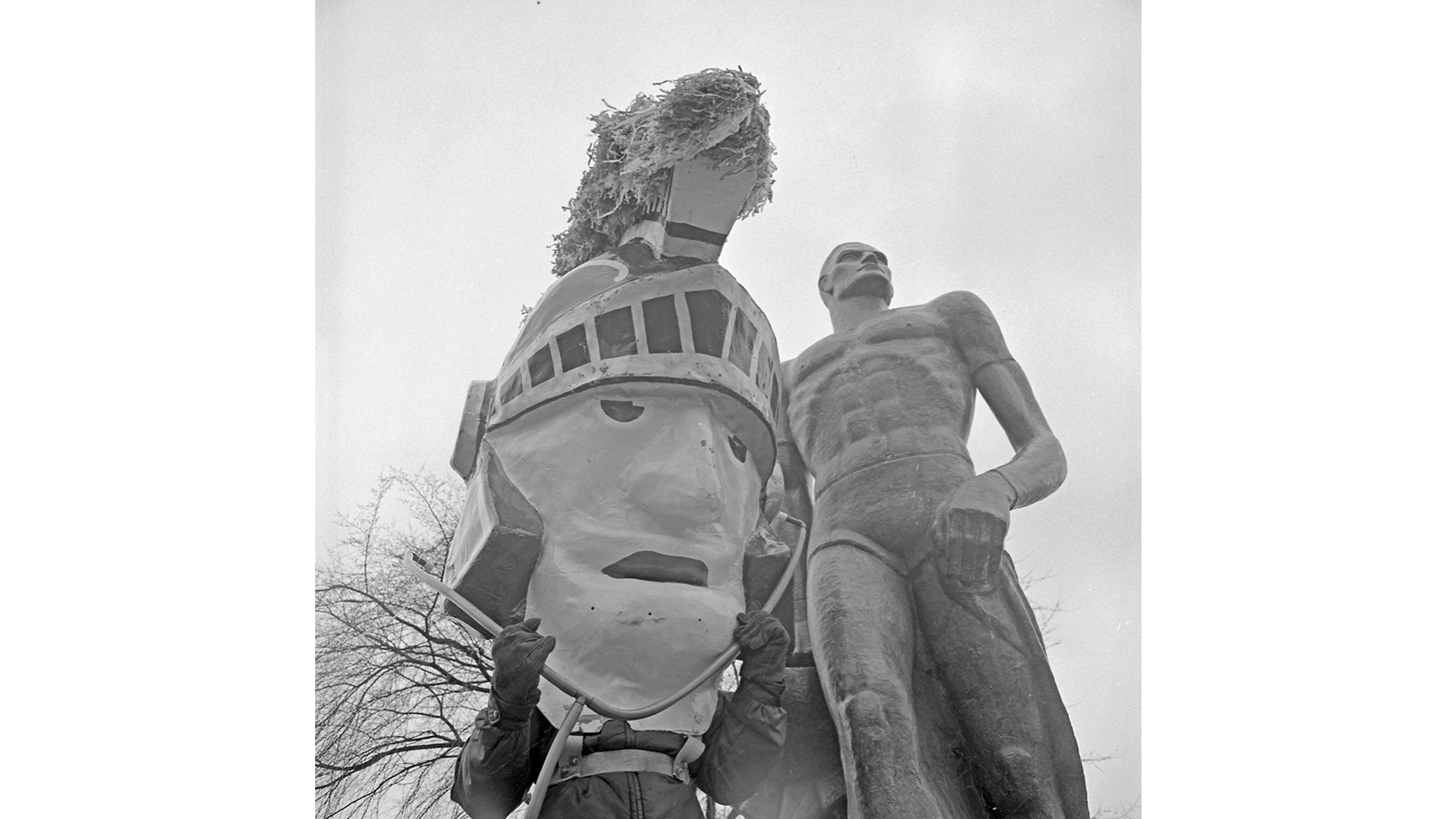
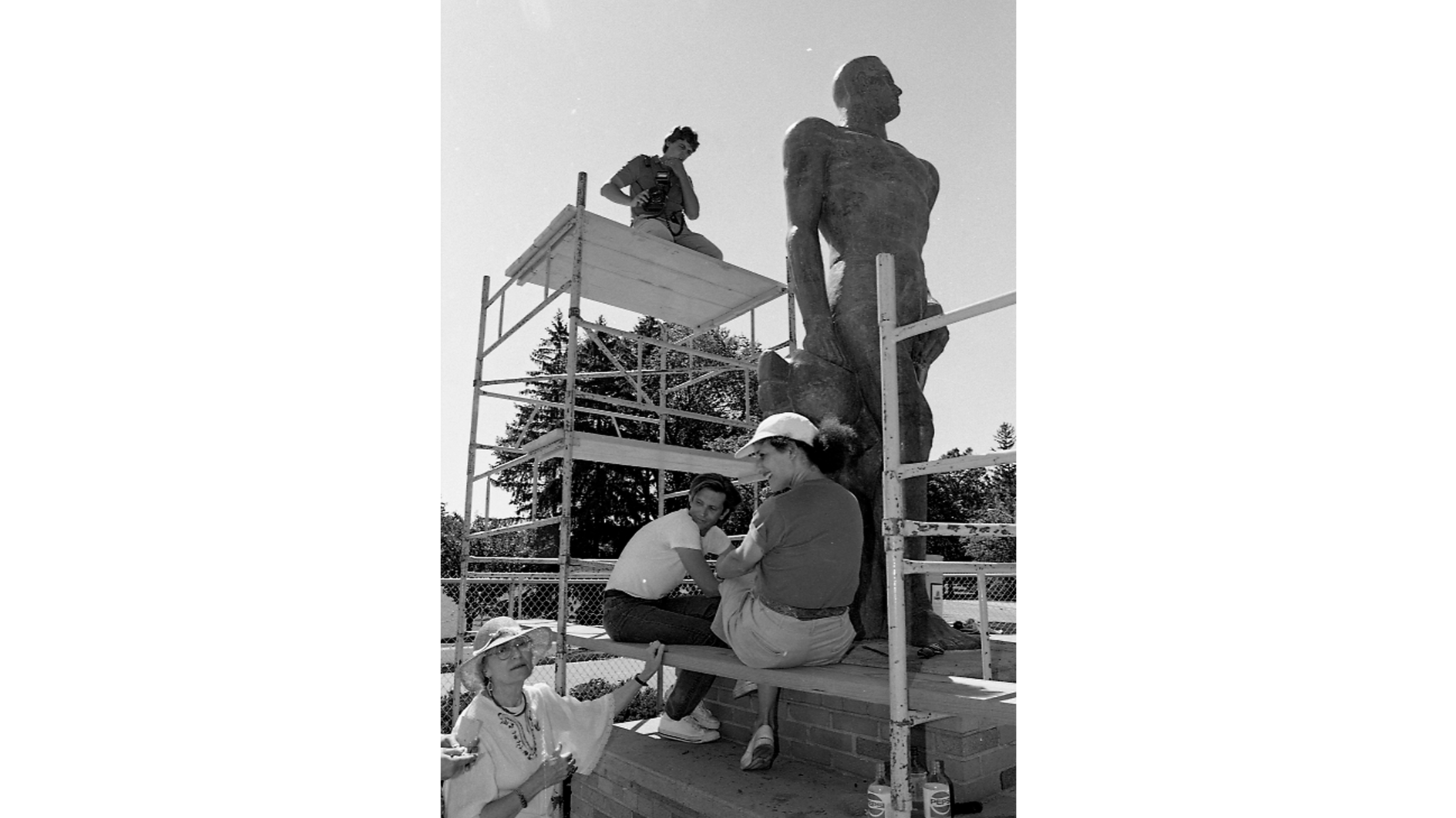
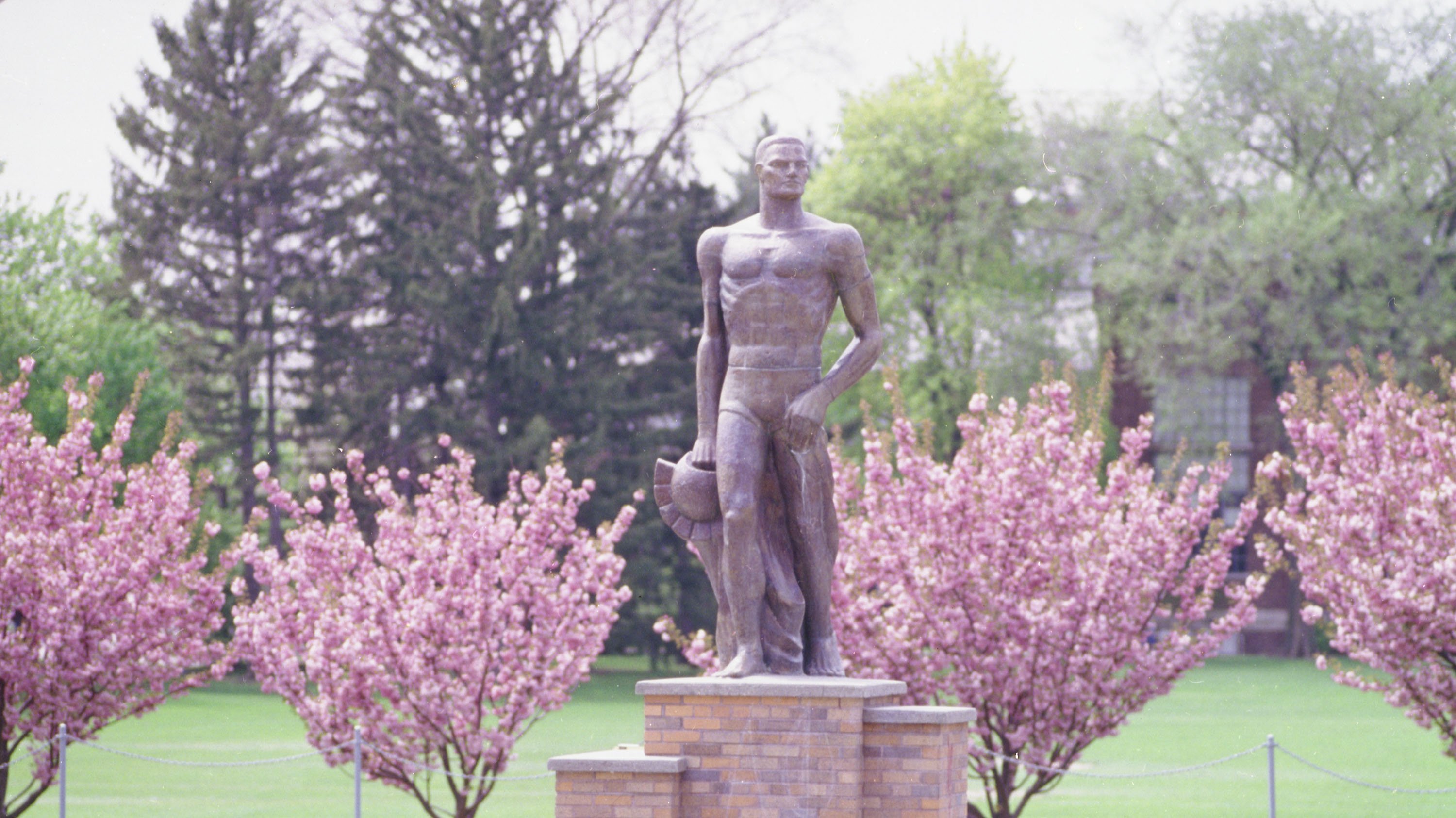
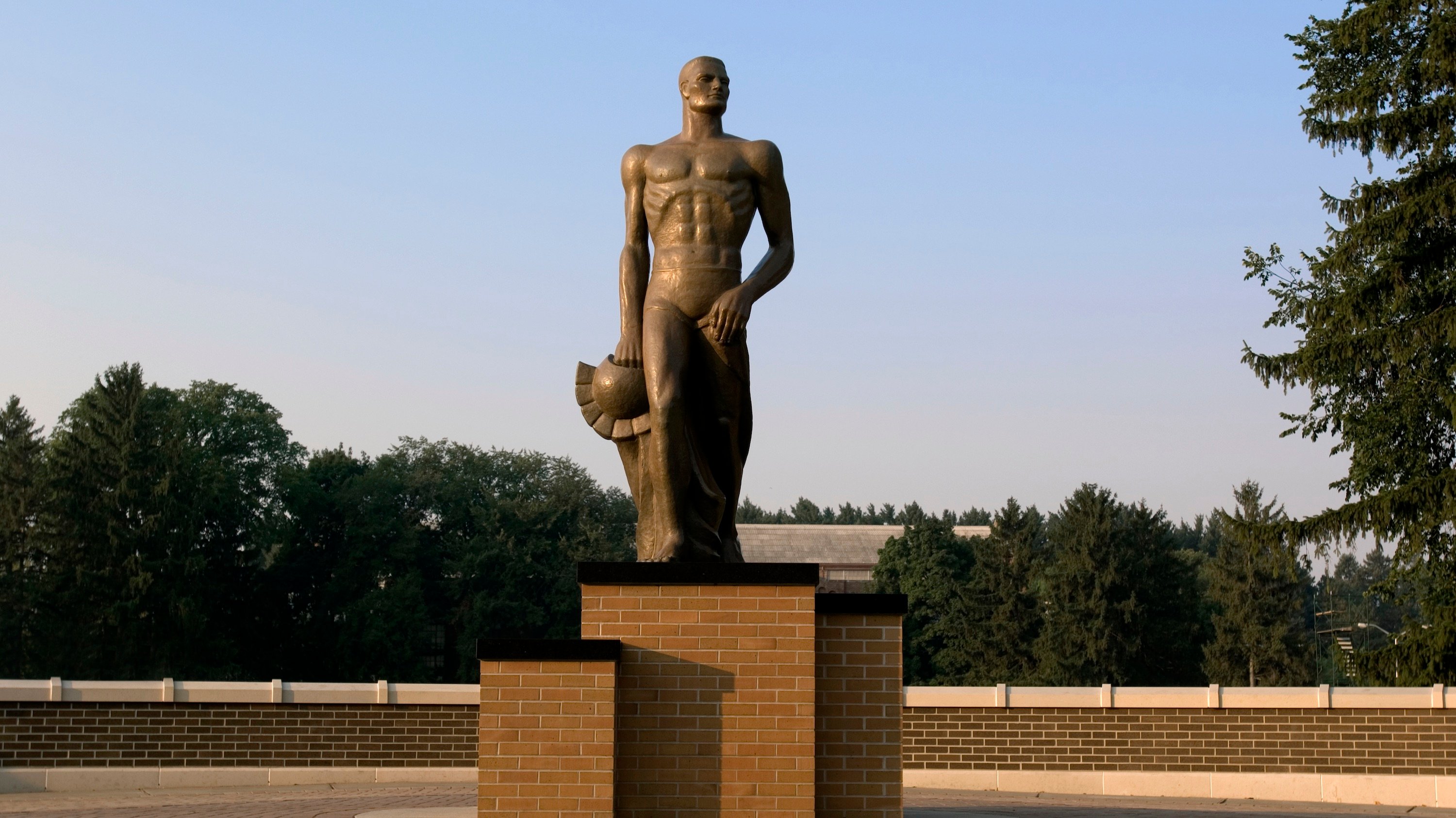
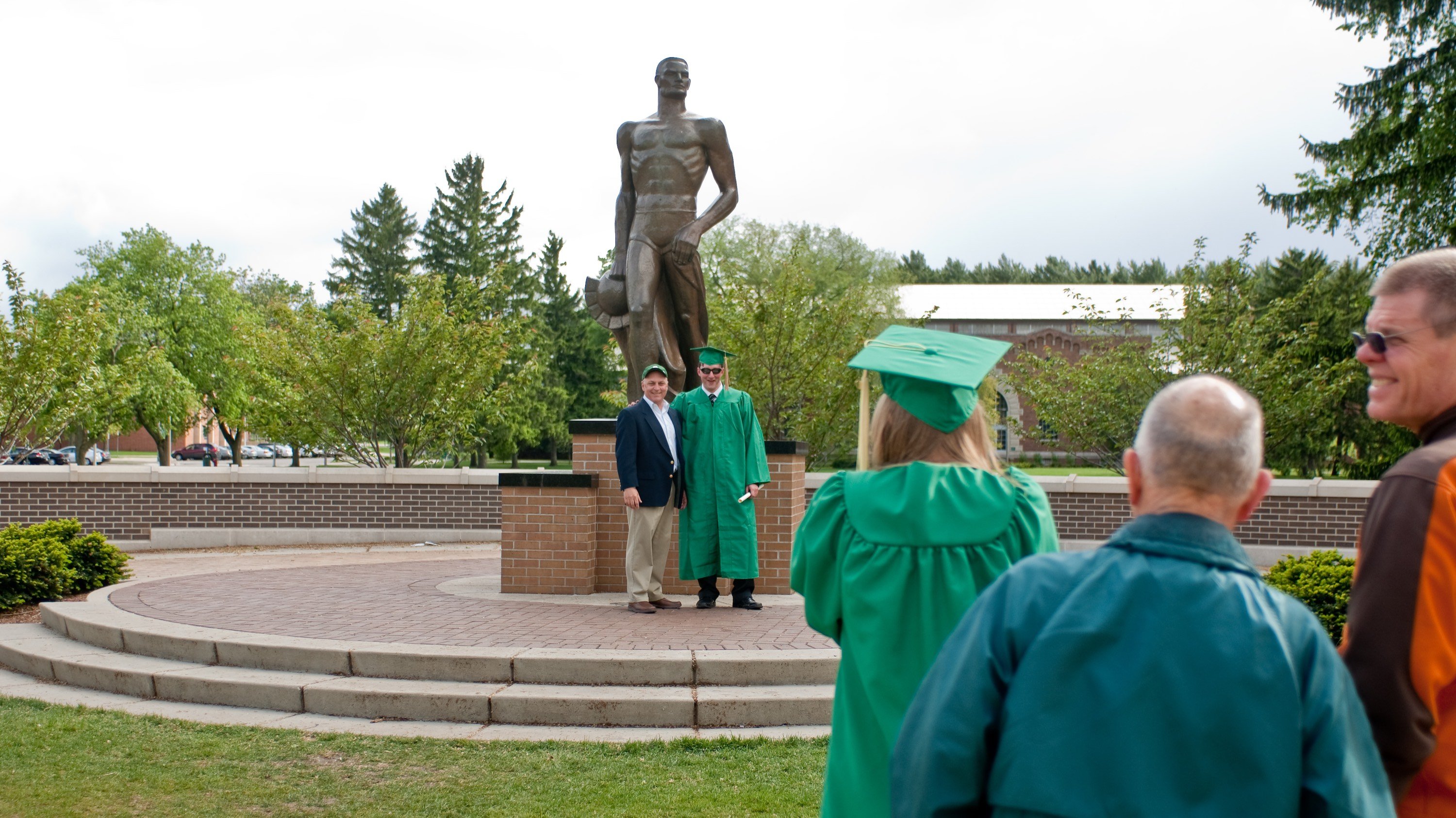
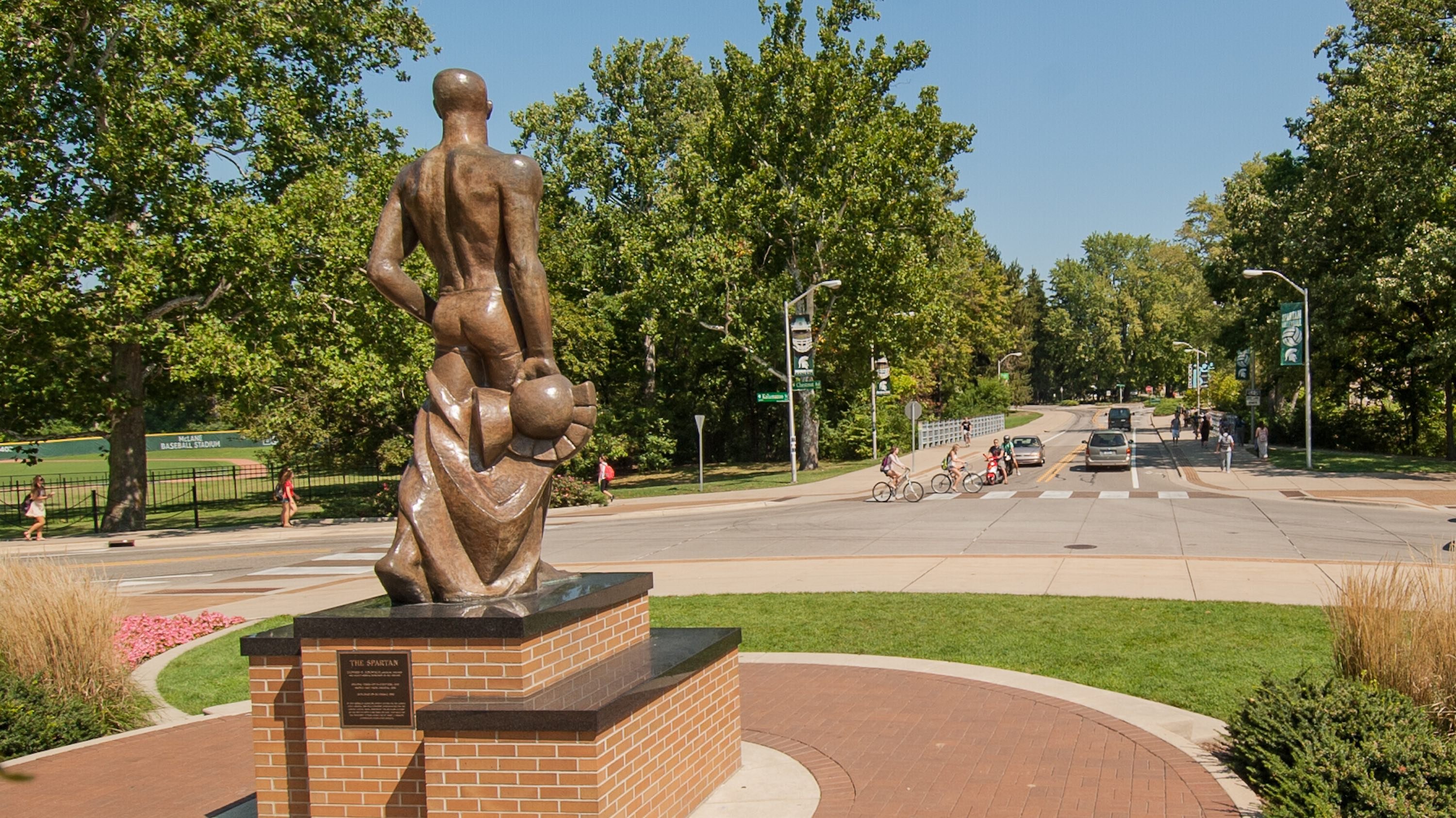
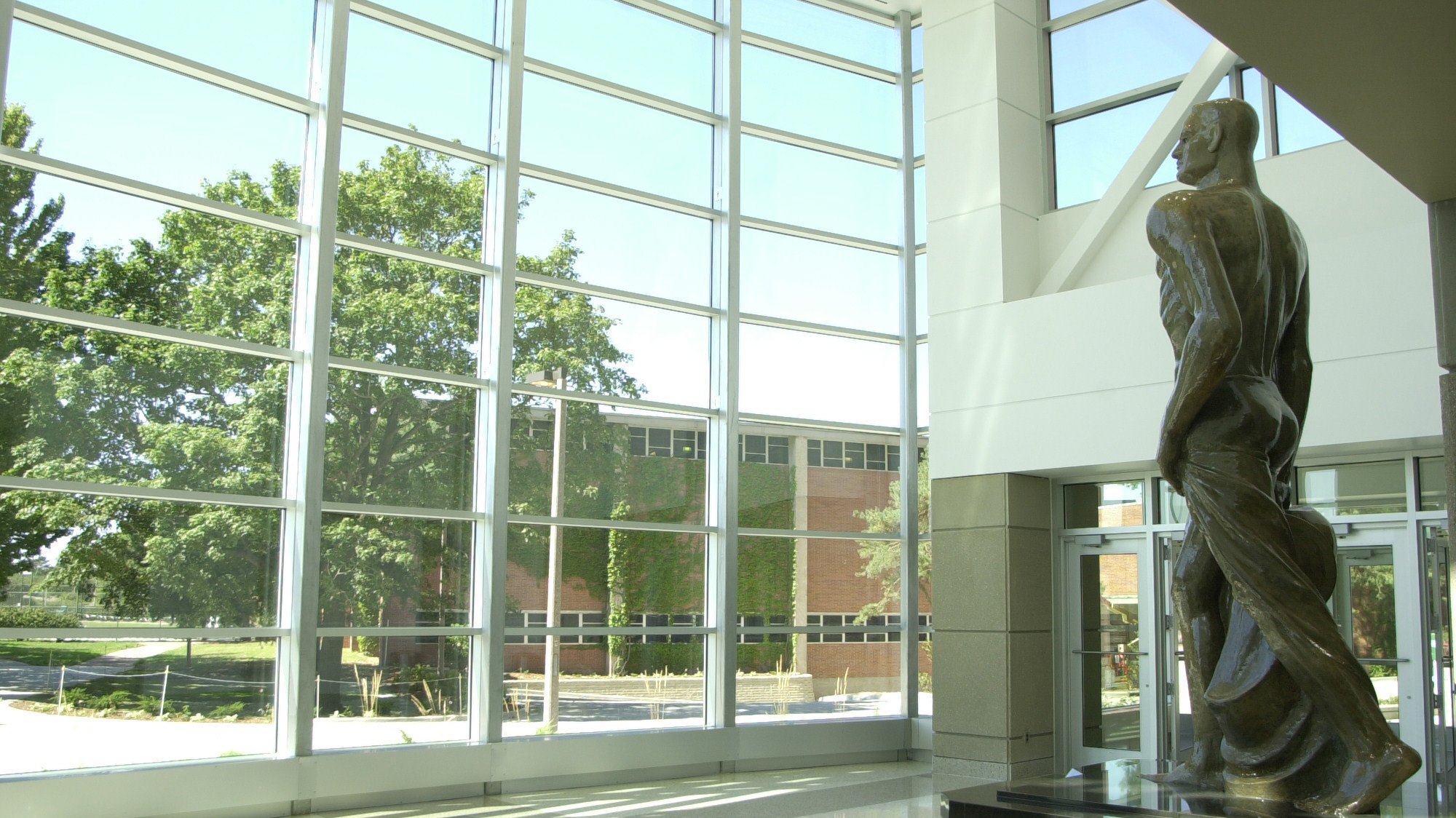
















The Spartan statue has given Spartans an appreciation for art for 79 years now — and much more than that.
Hannah continued in his speech, “In the years ahead, this Spartan warrior in this beautiful and proper setting will become one of the distinguishing marks of this campus that all students and visitors will associate with this college and this campus in much the same way that Beaumont Tower is now generally recognized as the proper symbol of Michigan State [University].” Photo by Nick Schrader, 2023.
The Spartan statue has given Spartans an appreciation for art for 79 years now — and much more than that.
Hannah continued in his speech, “In the years ahead, this Spartan warrior in this beautiful and proper setting will become one of the distinguishing marks of this campus that all students and visitors will associate with this college and this campus in much the same way that Beaumont Tower is now generally recognized as the proper symbol of Michigan State [University].” Photo by Nick Schrader, 2023.
01 / 13
MEDIA CONTACTS
Latest News
MSUToday Weekly Update
The MSUToday Weekly Update email showcases how Spartans are making a difference through academic excellence, research impact and community outreach. Get inspired by these stories of innovation, collaboration and determination. Plus, enjoy photos and videos of campus and more MSU content to help keep you connected to the Spartan community.